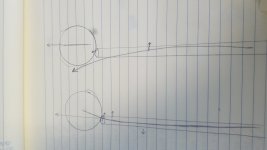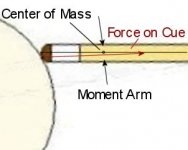Jaden,
I've done my best to try to explain and illustrate what is going on, but it seems like you are un-sway-able in your views and interpretations. I know you might think the same about my viewpoints, but be aware that my explanations are consistent with physics theory and also intuitively explain what is happening. Also be aware that I have been studying and teaching this sort of stuff at a high level for over 30 years, so I'm not just "shooting from the hip" or trying to invent explanations.
Regards,
Dave
I know you've done your best, and you act like it's my unwillingness to compromise to your viewpoint or inability to understand that's preventing me from "seeing the truth" lol.
Here is some deductive reasoning coming to my conclusion. I am fully open to you showing the premises to be incorrect and therefore the conclusion to be incorrect, but the reasoning is absolutely correct, so, unless you can show the premises to be incorrect.....
premise 1) the ball is accelerating away from the tip/shaft before the tip/shaft moves laterally away from the initial line of travel which is evident from high speed video because the tip is decompressing prior to lateral tip/shaft movement.
premise 2) an object accelerating away from another object cannot directly act on the object it is accelerating away from.
Conclusion) because a ball struck off center is accelerating away from the tip/shaft that imparted the force to accelerate the ball away from it, the ball cannot possibly be directly acting on tip/shaft in any way, especially pushing it laterally away from the ball.
The reasoning is sound. I know you'll try to come up with some other convoluted means pointing back to your own materials why it can't be right without ever addressing the actual premises.
So basically I'm putting these up so that the people who are reading this can go look at the materials themselves and see that these premises are correct.
You see, I don't play the, I"m an authority and everyone who matters agrees with me, game.
I put actual, understandable information out there that people can determine for themselves the accuracy there of.
It's funny, cause in all of this argument, which really isn't even an argument.
It's consisted of me providing explanations of why something must be a certain way and others stating, "no you're wrong because we say so. See, I've already stated how it REALLY works." Yeah but you haven't shown WHY it works that way and haven't really provided any evidence that that is how it works, except fallacy stating physics agrees with me.
That's not an argument, that's an appeal to authority. I could've said the same thing, "no, the physics agrees with me". I know you are but what am I.
Your condescending attitude and unwillingness to address my points with nothing more than, "that's the way it is", shows that you are just protecting your ego.
So again, show how any of my premises are wrong...because the logic is infallible...
Jaden



